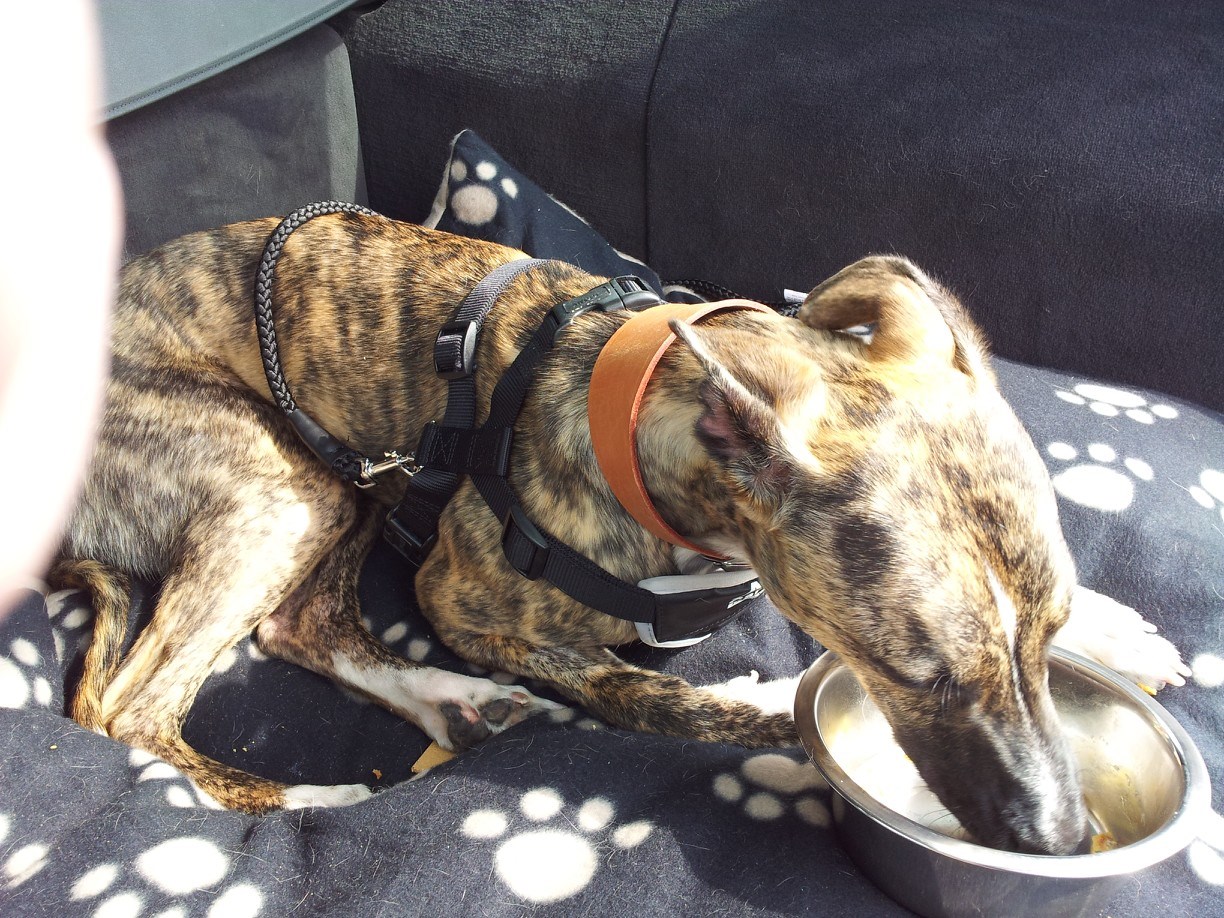
Travelling in a vehicle
The point of vehicles is to get you from A to B. That is all there is to say, isn’t it?
Well no not really.
We all have two instant images of animals being transported in a vehicle.
The cute sitting on your knee while you drive image and the crazy animal creating the wall of death race around the inside your vehicle while you try to drive.
This may surprise you, ok perhaps not for the wall of death image, but both of these options are illegal (in the UK).
Animals must be securely and safely restrained Rule 57 of the Highway Code (UK). Other countries may have different rules but the safety aspects are no different regardless of what country you are in.
Why must they be restrained? Well apart from the distraction possibilities you need to consider a really shocking fact:
A crash at 30 miles per hour with a 50lb (22.5kg) unrestrained animal would be thrown forward with a force equivalent to almost nine 12 stone men. Not only would that severely injure the animal, it would cause great damage to whatever/whoever it hit. (Statistical Information source: ROSPA. www.rospa.com )
So let’s get some suggestions for you to help get what is best for us.
Seatbelts:
There are loads of things out there on the market place but it generally boils down to two types of seatbelt attachment types, one that clips into the seatbelt fastener and the other that is a loop you feed the seatbelt through.
The attachment type is a trigger clip at one end of a (usually adjustable) strip of nylon with the seatbelt clip on the other end.
The loop type is similar to the attachment type but instead of the seatbelt clip it has a loop that you pass the normal seatbelt through before fastening. These attachment types tend to give us less room to jump about.
Important Note: Do not fasten any of these to our collar, use a harness and clip the attachments to there. A sudden jerk to the neck, even with sudden sharp braking could easily injure the neck.
Cages/crates/soft material pet carriers:
There is a wide variety of ‘containment’ type equipment out there.
Make sure you get one that is the correct size for us.
When considering them please do remember that if we are put on the seats or even in the boot, do remember to restrain the actual equipment as it will be no good if we are in a crate and the crate is free to be thrown forward.
Where possible add some comfortable bedding (and treats) that would protect us from being bounced around inside if there were to be an accident.
The Boot/Trunk:
You can use cages etc in this part of the car but don’t forget they will still need to be secured.
There are usually ground anchors inside most vehicles which a lead or other attachment could be secured to and then clipped to us as long as they will not end up wrapping ourselves up. (harness, not collar, for dogs).
This I also very useful when opening the boot/trunk, to stop us jumping out and quickly becoming a distant spot on the horizon
A ‘free roaming’ animal in the boot would be legal as long as there was a barrier/guard between the boot /trunk and the rest of the car.
Airbags:
What about airbags?
There are a lot of animals transported on the front seat, nothing wrong with that as long as they are properly and safely restrained, however most modern vehicles have passenger airbags.
Moving the seat as far back as possible or even switching off the passenger airbag are options
(I am not recommending either as I am not a professional and do not have the professional qualifications to do so)
I would suggest using the rear seats before using the front passenger seat.
The facts about airbags:
Airbags inflate rapidly (and then immediately deflate), cushioning the occupants and preventing or reducing the level of contact with the steering wheel or dashboard.
They need to inflate at an extremely fast rate in order to be fully inflated by the time a person's body begins to move in reaction to a collision. The bigger the airbag, the faster it has to inflate. In general, European airbags hold 35 litres of gas propellant and fully inflate within 25 milliseconds, which means that they have to expand at anything up to 160 mph. American air bags, usually holding 60 litres of gas, have to inflate even faster. The area of space within the car taken up by the airbag as it inflates is known as the 'airbag deployment zone'. Sensors within the vehicle monitor the direction and severity of an impact and fire the airbag if the severity and direction warrants it. The impact should be greater than 20mph, and in a frontal direction. Rear end shunts should not fire the airbag. As the airbag module fires, it and the gas it generates are hot, so car occupants may suffer minor burns.
(Statistical Information source: ROSPA. www.rospa.com )
Additional information:
Now that your animal is safely secured by whatever method, here a few other things to consider:
Windows:
Please do not let us stick our head out of the window. Apart from being hit by external objects, it could cause health issues such as eye and respiratory infections.
Or worse, we could jump out of the window while the car is moving.
Air conditioning:
Even while driving we could overheat or get too cold while travelling. Also ensure any ducts are not directly blowing at us as this could cause distress and/or respiratory problems.
Windscreen wipers:
A necessary item on a vehicle but most animals are extremely frightened of them, so check to see what we will do before setting off as you don’t want a sudden distraction while travelling if you need to use them. You may even need to move us to another part of the vehicle before setting off if we are reactive to them.
I will have probably missed some information so if you know of anything I have not covered then please let me know.
Stay safe out there
Tigger



